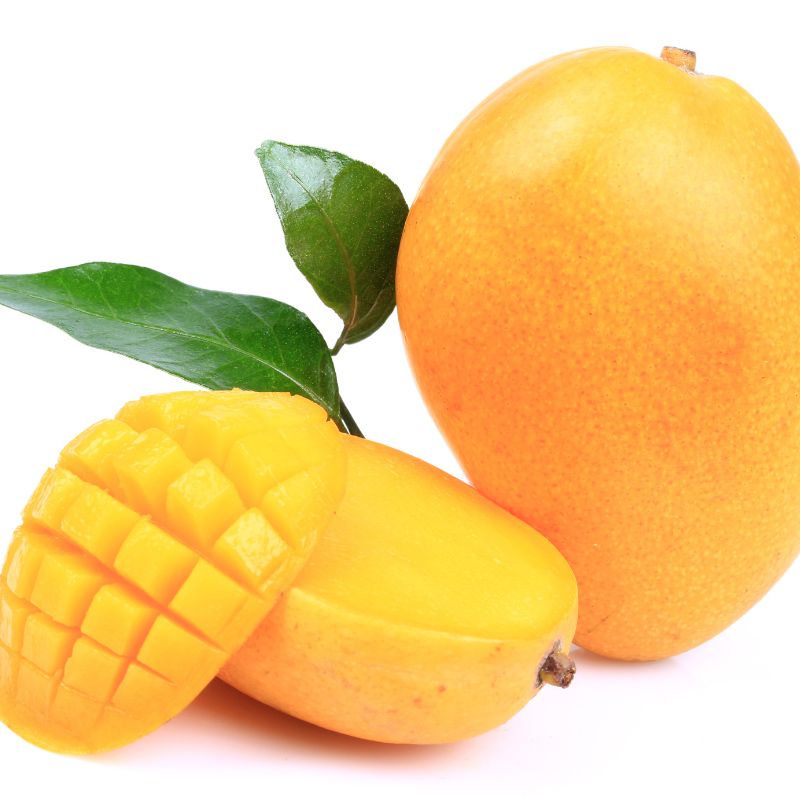Exactly How to Select and Shop Fresh Alphonso Mangoes for Maximum Taste
Picking and saving fresh Alphonso mangoes is essential for unlocking their renowned flavor profile. As we discover these approaches, it becomes noticeable that the journey to relishing the best Alphonso mango involves more than straightforward choice-- it requires a nuanced strategy that can change your pleasure of this elegant fruit.
Understanding Alphonso Mango Varieties
When it involves Alphonso mangoes, numerous lovers are often surprised to discover that there are a number of unique selections, each with distinct features. One of the most acknowledged kind is the Hapus, known for its rich flavor and buttery appearance. This variety is normally tiny to medium-sized, with a vivid golden-yellow skin when ripe. It is usually thought about the gold standard of Alphonso mangoes due to its sweet taste and aromatic profile.
Another noteworthy variety is the Kesar, which has a slightly different preference, leaning towards a much more tangy flavor. Kesar mangoes are bigger than Hapus and show a greenish-yellow shade, making them visually distinct. They are primarily grown in the Gir region of Gujarat and are recognized for their fiberless pulp.
Furthermore, the Dussehri selection uses another layer of variety, with a wonderful, aromatic taste that allures to several mango enthusiasts. Each variety has its very own seasonality and perfect growing conditions, which can influence the taste account and texture. Comprehending these distinctions can enhance the option process, enabling consumers to choose the ideal Alphonso mango based on their preference choices and culinary requirements.
Recognizing Ripeness and Quality
Analyzing the perfection and quality of Alphonso mangoes is critical for ensuring a wonderful eating experience. To identify ripeness, concentrate on the mango's shade and texture. A ripe Alphonso normally displays a vibrant golden-yellow hue, sometimes emphasized with a slight blush. The skin needs to be smooth, without imperfections, and exhibit a mild offer when delicately pressed. This tactile reaction indicates the fruit's inner gentleness, an indication of ideal ripeness.
Additionally, the aroma plays a vital duty in determining high quality. A ripe mango gives off a wonderful, fragrant aroma, particularly near the stem. Prevent mangoes that lack scent, as they may be underripe or past their prime. It is also necessary to look for any type of dark spots or wrinkles, which might recommend overripeness or perishing.
When selecting Alphonso mangoes, consider their size; bigger fruits typically have a richer flavor profile. anonymous Evaluating the stem end can give hints about perfection; a slightly indented stem location is better. alphonso mango. By following these guidelines, you can with confidence choose top notch Alphonso mangoes that promise a delicious and delicious experience
Ideal Practices for Selection
To guarantee you that site choose the finest Alphonso mangoes, it is vital to keep a couple of best methods in mind. Take a look at the color of the mango; a ripe Alphonso needs to display an abundant golden-yellow hue with occasional environment-friendly spots. This pigmentation suggests optimum perfection and sweetness.
Next, analyze the appearance by carefully squeezing the mango. It should yield slightly under pressure, suggesting softness without being extremely mushy. Firm mangoes may not be ripe yet, while exceedingly soft ones might have started to overripen.
In addition, take notice of the scent. A ripe Alphonso mango sends out a pleasant, fragrant aroma near the stem end. This fragrance is an excellent indicator of flavor, so if you don't find a pleasurable smell, it may be best to pick an additional fruit.
In addition, look for acnes or dark areas on the skin. While small imperfections are normal, considerable bruises can signify putridity. Finally, select mangoes that are consistent in shapes and size, as this typically indicates constant top quality. By sticking to these ideal methods, you can enhance your possibilities of enjoying the splendid taste of Alphonso mangoes.
Proper Storage Techniques

In the refrigerator, Alphonso mangoes can web be saved in the crisper cabinet, where the humidity is a little greater, aiding to retain dampness. It is recommended to maintain them in a breathable bag or container to decrease moisture loss while preventing them from soaking up any type of off-odors from various other foods. For optimum freshness, eat the mangoes within five to seven days of refrigeration.
Furthermore, if you have reduced mangoes, they should be saved in a closed container and consumed within 2 to 3 days. This practice will aid to maintain their vivid taste and stop putridity. Proper storage not just enhances your eating experience yet also extends the life span of these delectable fruits.

Enjoying and Using Alphonso Mangoes
Thrilling in the beautiful flavor of Alphonso mangoes can raise a variety of cooking experiences. These mangoes can be delighted in fresh, sliced up, and offered as a revitalizing snack or dessert.
Along with being eaten raw, Alphonso mangoes can be incorporated into smoothies, salads, and salsas, adding an exotic style to any meal. Their rich flavor additionally makes them suitable for treats, such as mango sorbets, ice creams, or puddings. For those who take pleasure in cooking, take into consideration using Alphonso mangoes in mouthwatering meals, such as curries or chutneys, where their sweet taste can stabilize hot flavors.
Protecting their essence is likewise an option; blending the mangoes and freezing the pulp permits year-round enjoyment. Inevitably, the convenience of Alphonso mangoes guarantees that their vibrant preference can be savored in plenty of means, making them a treasured fruit in various cooking customs.

Conclusion
In conclusion, picking and saving Alphonso mangoes with treatment ensures the finest flavor and quality. By adhering to these standards, the enjoyment of Alphonso mangoes can be optimized, allowing for ideal culinary applications and a delightful sensory experience.